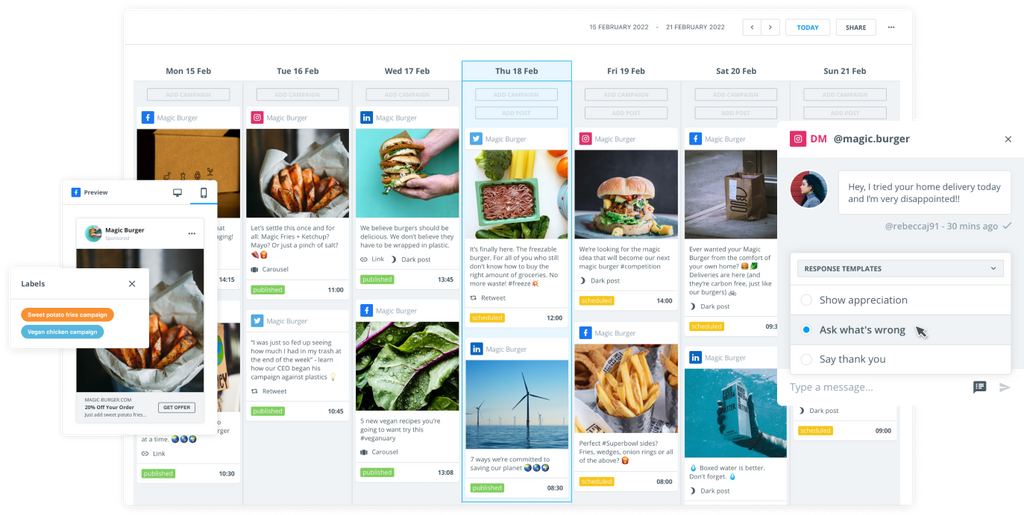Ideally, you want to post your content when, or just before, your audience is peaking in numbers on Instagram. For example, if your audience is mostly online between 10AM - 12PM, you’ll likely want to post your content just beforehand. If your audience looks like the graph above, aim to post even earlier, so you can catch your audience from 4 PM onwards.
3. Look at your top-performing posts
Your top-performing posts are a brilliant way of monitoring which times are best to post on Instagram. After all, they’re relevant to your business and can provide insight into when your existing audience is most active.
Using social media management software, you can access in-depth analytics on how your audience works.
4. Regularly review your strategy
As with every platform, Instagram changes frequently. If you don’t monitor your content strategy closely, you’ll likely see engagement numbers fall as your audience’s preferences change.
Every brand should regularly update its social media strategy to stay ahead of algorithm and audience changes. By monitoring your engagement rates and audience regularly, you can discover what’s working and what’s not before it’s too late. As time goes on, you’ll be able to see which content resonates with your audience the most and which content doesn’t quite hit your demographic.
We recommend conducting bi-weekly or monthly reporting for your social media strategies, so you can regularly review how to optimize your content, and discover the best times to post on Instagram for your brand.
5. Work to expand your audience
When speaking to Tondreanna, she mentioned that you need to approach things differently if your goal is to expand beyond your current audience, or if you’re looking to target new audiences within different geographical locations.
She said: “You can use your current audience insights as a baseline. For example, if most of your audience is consistently the most active between 12PM – 4PM, this is a solid behavioral baseline to work with.”
“What you can do is schedule out content within this baseline timeframe within other timezones. For example, if your goal is to target this audience type and you're looking to expand into APAC, then schedule out posts within that 12PM – 4PM time frame for APAC's timezone.”
Of course, you need to ensure that the content is relevant to your audience, and try to use other strategic elements with your post – such as location tagging and geographical hashtags.
Roundup
Of course, finding the best time to post on Instagram is not the only way to grow your presence on social media. It’s important to consider the diversity of your content, exploring new topics, implementing hashtags, encouraging community engagement, and much more as part of a wider strategy.
Generally, a good rule of thumb is to incorporate a diverse range of posting times, and analyze the outcome of each. Plus, depending on the goals of a post or campaign, you can be more selective about which time works best for your brand.
